The MGA With An Attitude
ALTERNATOR That LOOKS LIKE A GENERATOR - AC-210
"DYNALITE" looks like a dynamo but is a lightweight alternator
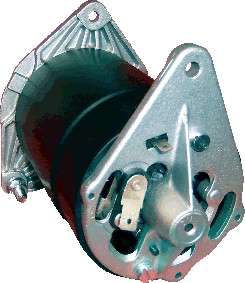
RAC006 - Lucas C40 Replacement
|
This device is very convincing, looking exactly like an original 22-amp generator, but it hides a 40 amp alternator inside. The main housing shell is also light weight aluminum in place of the original steel part, but will still pass as original when painted black or one of the original colors. For more information see web site at www.powerlite-units.com/dynalite-alternator-conversions
Note that the C40 clone has the stepped case and is a standard model. If you need a C39 clone (with screw post terminals) for Concours originality on an early MGA or MGA Twin Cam, the part may be substantially more expensive and will likely have much longer delivery time. The company may offer to convert your original C39 into an alternator in less time, but then you would have the heavier steel case. Contact Racemettle about this issue before you make a commitment.
"DYNATOR" also looks like a dynamo but is a lightweight alternator
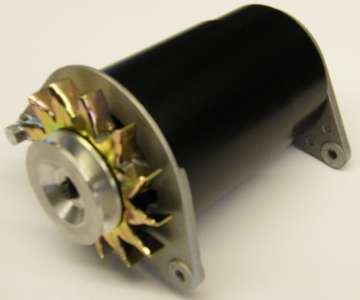
Lucas C40 Replacement
|
Here is another one very similar from a different company. In this picture the front pulley is different from original issue for MGA, but that may be negotiable or easy to change. This one also has a light weight aluminum body, plus a 50 amp output. See web site at www.wosperformance.co.uk/dynators
"DYNAMATOR" also looks like a dynamo but is a lightweight alternator
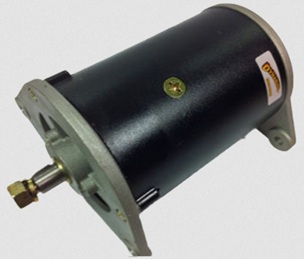
Lucas C40 Replacement
|
Here is another one very similar from a different company, supplieed without pulley and fan. This one also has a light weight aluminum body, plus a 45 amp output. See web site at www.accuspark.co.uk/dynamator
Addendum April 2013:
I have heard several reports of failure of the Dynalite alternator. One case of failure to charge, another case of internal melt-down, and a few other cases just noted as failure. A couple of units I know were returned for warranty replacement. Some other people simply give up on the unit after a failure (or two). Failure to charge is a device fault, either mechanical wiring or the internal regulator. Melt-down is caused by overcharging, a fault of the internal regulator. While it may not be any more prone to failure than a Lucas alternator, it is certainly more aggravating considering the replacement cost and the single source supply and possible delay in delivery.
I wouldn't recommend this device simply as a matter of economics (too expensive). The only reason for existence of this device is for installations requiring more than 20 amps output (extra bright rally lights for instance) which are not allowed to run an alternator for certain competition situations. Even then the Dynalite is technically illegal, but may sneak past the tech inspectors. It is also no good for concours show since wiring on the control box must changed. This device is sort of a good solution in search of a problem, and quality level and reliability is currently suspect.
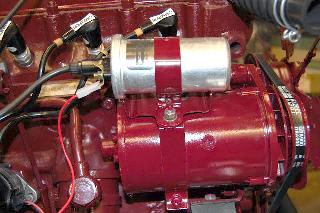 Addendum May 2014:
Addendum May 2014:
Bill Jeffries wrote:
"In the last year or so they've got cheaper and I've found one at 125 ($200) which has received many excellent reviews. Time will tell - but I'm delighted with the quality, finish and fit. It bolted straight up to the original brackets and adjusting arm and uses the original fan and pulley".
This is the 'Powerlite Dynalite' (alternator) which they say produces 80% more power and weighs 40% less than the original Lucas unit. Purchased through Accuspark, the same unit being sold for in excess of 300 elsewhere.
Addendum April 28. 2025:
Failure reports abound, and now we have some pictures to explain the poor reliability.
On Apr 28, 2025, Brian C in Teramo, Abruzzo, Italy ITA wrote:
"Nearly four years ago I installed an Accuspark Dynamator, .... Whilst on a rally the output dropped to 12 volts from its usual 14.2 and the car was then running on the power in the battery. .... Today I dismantled it thinking that maybe a diode or two or possibly the voltage regulator had failed. The problem was obvious upon looking at the connections between the diode pairs and the coils. Talk about cheap design and sloppy build quality, it is amazing that it had been charging for as long as it did. Due to minimal contact between the solid copper wires since new, there have obviously been many overheating cycles until total contact failure finally occurred. I cleaned the wires, made proper solder joints and closed the holding clamps tightly....hey presto, 14 volts restored. How does the manufacturer think that wires laid over each other and poorly held together will reliably carry 45 amps?
 If you have one of these units fitted I suggest you open it up and have a look at the connections before you are left stranded on a dark rainy night. Just a thought! If you have one of these units fitted I suggest you open it up and have a look at the connections before you are left stranded on a dark rainy night. Just a thought!
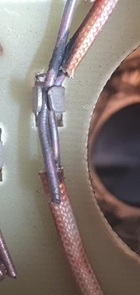
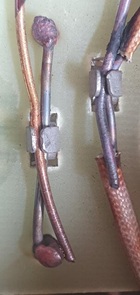
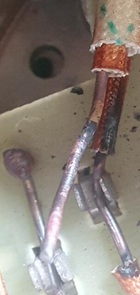
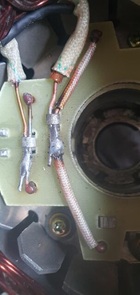
Pictures above are from an Accuspark Dynamator
Mind you, we are now talking about at least three differnt brand names,
"DYNALITE" (from Powerlite).
"DYNATOR" (from WOSPerformance).
"DYNAMATOR" )(from Accuspark).
|







